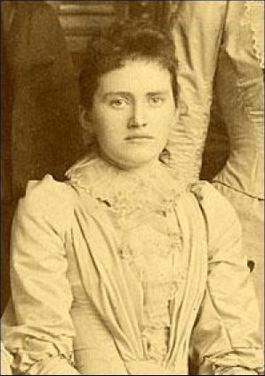Hilbert's tenth problem is the tenth on the list of mathematical problems that the German mathematician David Hilbert posed in 1900. It is the challenge to provide a general algorithm that, for any given Diophantine equation, can decide whether the equation has a solution with all unknowns taking integer values.
In mathematics, Diophantine geometry is the study of Diophantine equations by means of powerful methods in algebraic geometry. By the 20th century it became clear for some mathematicians that methods of algebraic geometry are ideal tools to study these equations. Diophantine geometry is part of the broader field of arithmetic geometry.
In mathematics, Hilbert's fourteenth problem, that is, number 14 of Hilbert's problems proposed in 1900, asks whether certain algebras are finitely generated.
Hilbert's twelfth problem is the extension of the Kronecker–Weber theorem on abelian extensions of the rational numbers, to any base number field. It is one of the 23 mathematical Hilbert problems and asks for analogues of the roots of unity that generate a whole family of further number fields, analogously to the cyclotomic fields and their subfields. Leopold Kronecker described the complex multiplication issue as his liebster Jugendtraum, or "dearest dream of his youth", so the problem is also known as Kronecker's Jugendtraum.
Hilbert's seventeenth problem is one of the 23 Hilbert problems set out in a celebrated list compiled in 1900 by David Hilbert. It concerns the expression of positive definite rational functions as sums of quotients of squares. The original question may be reformulated as:
In mathematics, a field F is called quasi-algebraically closed if every non-constant homogeneous polynomial P over F has a non-trivial zero provided the number of its variables is more than its degree. The idea of quasi-algebraically closed fields was investigated by C. C. Tsen, a student of Emmy Noether, in a 1936 paper ; and later by Serge Lang in his 1951 Princeton University dissertation and in his 1952 paper. The idea itself is attributed to Lang's advisor Emil Artin.
In mathematics, Clifford's theorem on special divisors is a result of William K. Clifford on algebraic curves, showing the constraints on special linear systems on a curve C.
In mathematics, a Kloosterman sum is a particular kind of exponential sum. They are named for the Dutch mathematician Hendrik Kloosterman, who introduced them in 1926 when he adapted the Hardy–Littlewood circle method to tackle a problem involving positive definite diagonal quadratic forms in four variables, strengthening his 1924 dissertation research on five or more variables.
In mathematics, the Nagata conjecture on curves, named after Masayoshi Nagata, governs the minimal degree required for a plane algebraic curve to pass through a collection of very general points with prescribed multiplicities.
In mathematics, real algebraic geometry is the sub-branch of algebraic geometry studying real algebraic sets, i.e. real-number solutions to algebraic equations with real-number coefficients, and mappings between them.
Ganea's conjecture is a now disproved claim in algebraic topology. It states that
In mathematics, the Golod–Shafarevich theorem was proved in 1964 by Evgeny Golod and Igor Shafarevich. It is a result in non-commutative homological algebra which solves the class field tower problem, by showing that class field towers can be infinite.

Virginia Ragsdale was a teacher and mathematician specializing in algebraic curves. She is most known as the creator of the Ragsdale conjecture.

Oleg Yanovich Viro is a Russian mathematician in the fields of topology and algebraic geometry, most notably real algebraic geometry, tropical geometry and knot theory.
In operator theory, von Neumann's inequality, due to John von Neumann, states that, for a fixed contraction T, the polynomial functional calculus map is itself a contraction.
In mathematics, a Stanley–Reisner ring, or face ring, is a quotient of a polynomial algebra over a field by a square-free monomial ideal. Such ideals are described more geometrically in terms of finite simplicial complexes. The Stanley–Reisner ring construction is a basic tool within algebraic combinatorics and combinatorial commutative algebra. Its properties were investigated by Richard Stanley, Melvin Hochster, and Gerald Reisner in the early 1970s.

In mathematics, the Casas-Alvero conjecture is an open problem about polynomials which have factors in common with their derivatives, proposed by Eduardo Casas-Alvero in 2001.
In number theory, the Lander, Parkin, and Selfridge conjecture concerns the integer solutions of equations which contain sums of like powers. The equations are generalisations of those considered in Fermat's Last Theorem. The conjecture is that if the sum of some k-th powers equals the sum of some other k-th powers, then the total number of terms in both sums combined must be at least k.
Viatcheslav Mikhailovich Kharlamov is a Russian-French mathematician specializing in algebraic geometry and differential topology.




